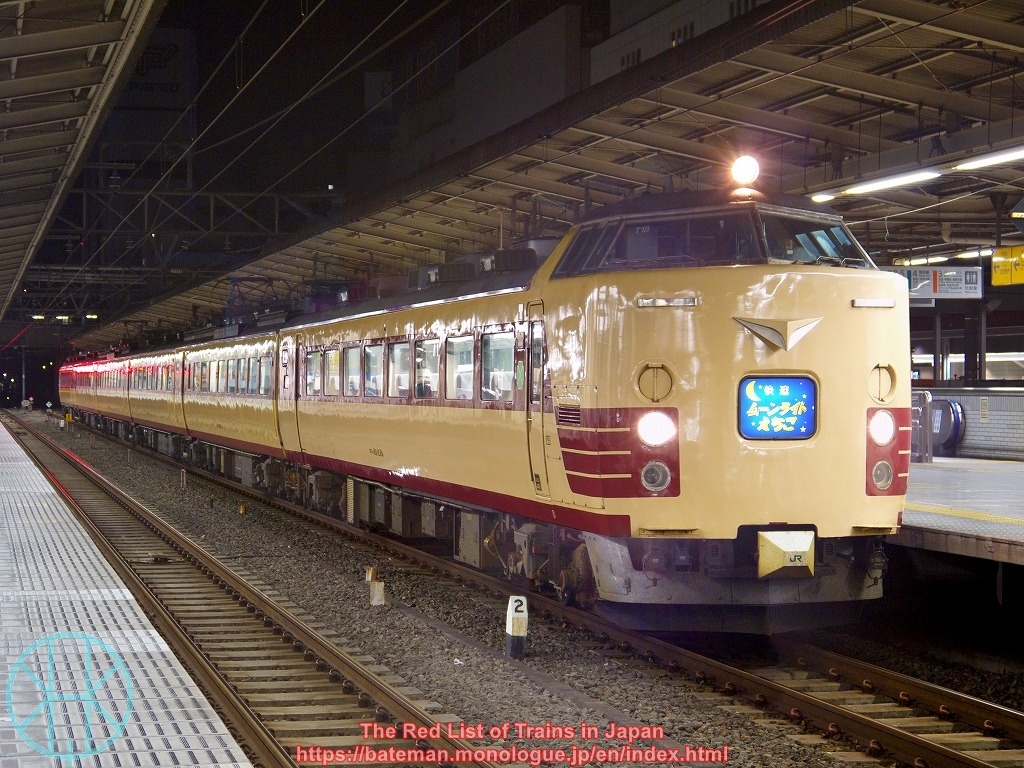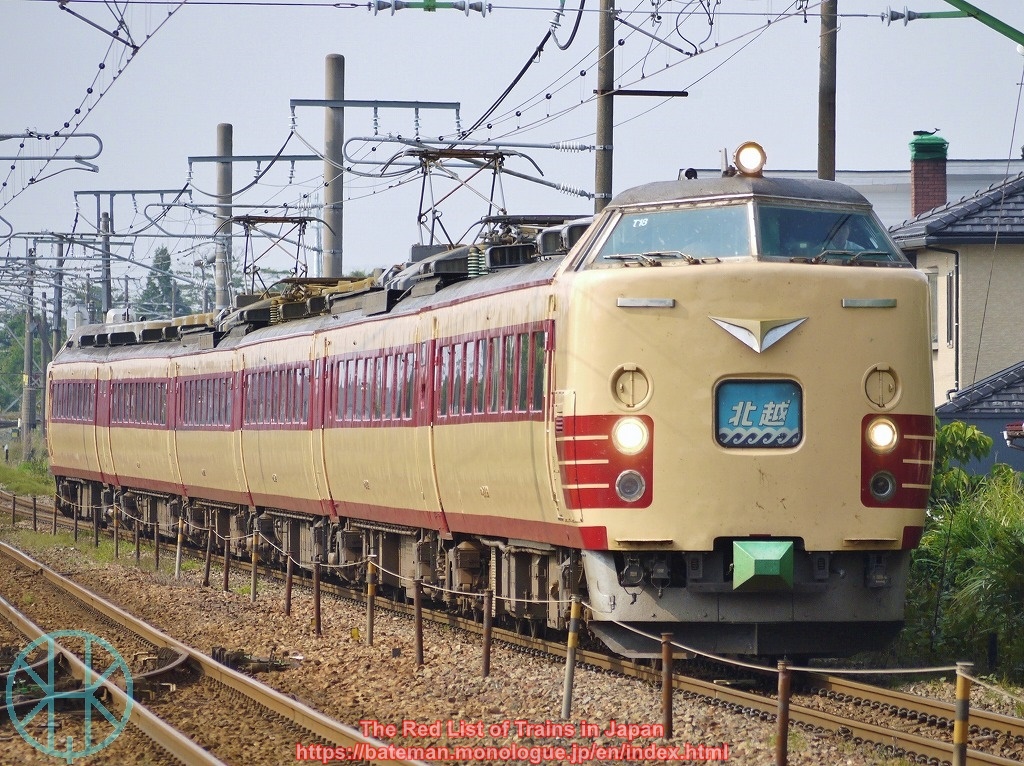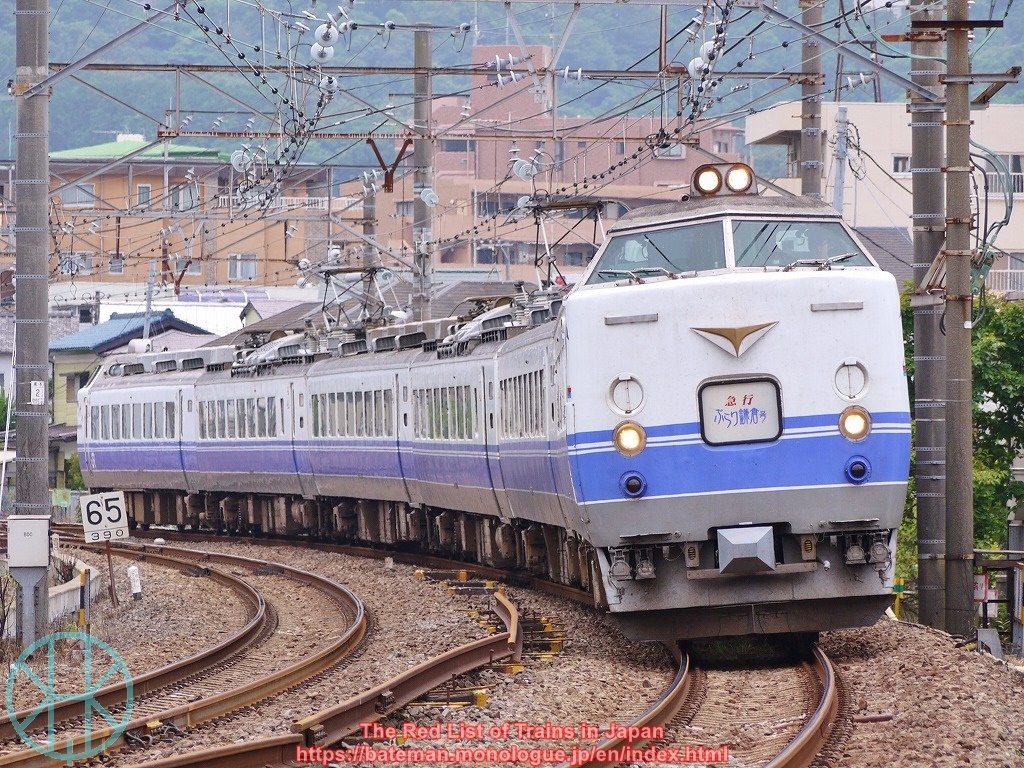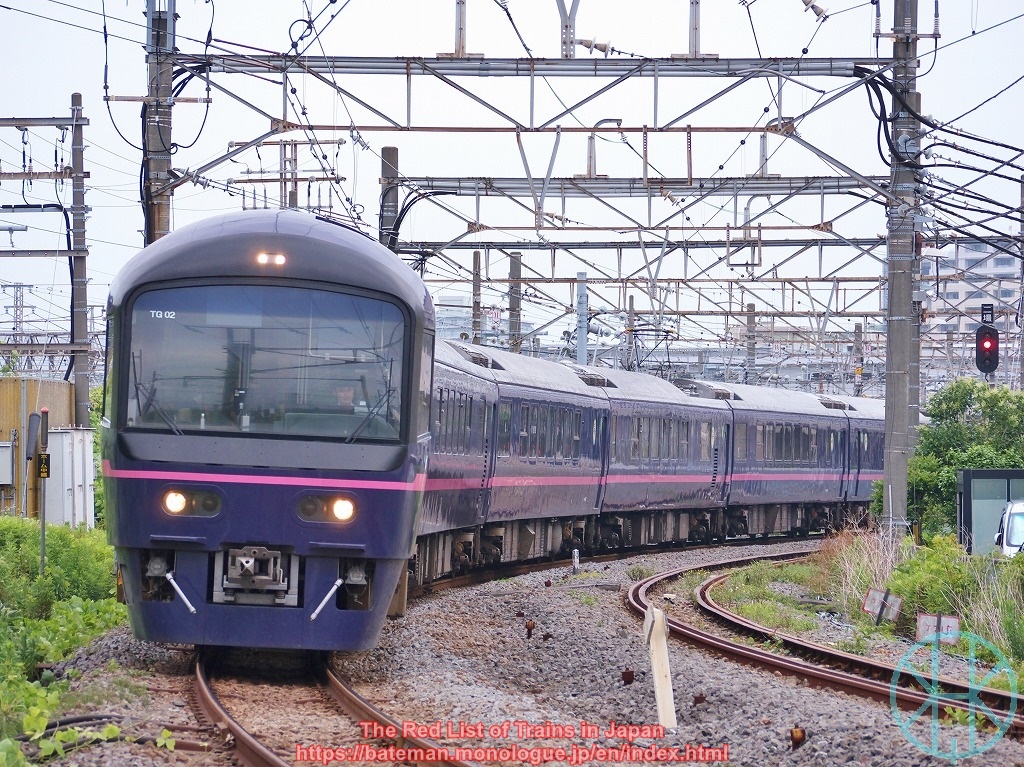JNR 485 series

Data (as of 29 Jul 2023)
| Status: | Extinct |
| Constructed in: | 1964-79 |
| Number built: | 1,453 |
| Retired in: | 2022 |
History
The 485 series was the most numerous limited express EMU type, operated across the country by Japanese National Railways. It was the first limited express train type that was compatible with both 1,500V DC and 20 kV AC electric systems.
There were several variants of the 485 series: 481 series, introduced in 1964-65 for western Japan, where AC electric power is generated at 60 Hz; 483 series, built in 1965-66 for eastern Japan, where the power is generated at 50 Hz; 485 series, introduced in 1968-79 and compatible with both frequencies; and 489 series, constructed in 1971-79 and based on the 485 series, but also compatible with Class EF63 locomotive (bank engine) to climb steep gradients of the Usui Pass in Nagano Prefecture.
The 485 series (including variants) were used on various limited express trains, most of which were long-distance such as Yamabiko (Ueno - Morioka via Tohoku Main Line), Hakucho (Osaka - Aomori via Kanazawa, Niigata and Akita), Tsubame (Nagoya - Kumamoto via Osaka) and Raicho (Osaka - Niigata via Kanazawa). The series were also used in Hokkaido on Ishikari (Sapporo - Asahikawa), though they did not last long as the series suffered from severe weather in winter. As Sanyo and Tohoku Shinkansen were opened, the 485 series were shortened and reallocated to middle-distance limited express services.
In 1987, JR Hokkaido, JR East, JR West and JR Kyushu succeeded the trains. JR Hokkaido had nine disused intermediate carriages, and all but one were scrapped by 1990. A dining car was converted to 24 series and used for sleeper train until 2008.
JR East operated them in the Northeast region, while also used a unit on through-services towards Kinugawa-onsen and Tobu-nikko on Tobu Railway. The series remained as a key player of intercity trains until early-2000s, but they were replaced with newer trains by the 2010s. The last regular service was not limited express but rapid trains on Shin-etsu Main Line in Niigata Prefecture, which was discontinued in 2017.
JR West used them mostly on Hokuriku Main Line, while converted some of them to DC-only EMUs and remaned 183 series.
JR Kyushu repainted most units red, and used on the entire island until 2014. In the last two years, two units were restored to the original livery and used for rail tours.
In the 1990s, many 485 series trains were converted to "Joyful Trains", that were specifically designed for group tours. Most of them were dramatically refurbished so that it was hard to believe that they are old limited express trains. Ordinary units were withdrawn by 2017, and all Joyful Trains retired by 2022. The last one was Resort Yamadori, which belonged to Takasaki Depot (JR East) and was used for rail tours and seasonal trains.
Photos

Those built in 1964-71 were called "The Bonnet Style". JR West used very few of them until 2012.

Those built in 1972-73 had centre gangway, though it was seldom used.

JR East used them for Limited Express Hokuetsu (Niigata - Kanazawa) until 2015, just before Hokuriku Shinkansen was extended.

Most of them in Niigata Prefecture had been painted white and blue.

The last "original style" unit of the 485 series was mostly used during holiday season on Ban-etsu East Line in Fukushima Prefecture. It retired in 2016.

Those with four headlights were introduced to Hokkaido in 1974, but reallocated to other region by 1980. All of them retired by 2015.

The 485 series was very common even in Tokyo and surrounding areas until the early-2010s.

Refurbished unit of JR East (Aomori area), which also ran as far as Hakodate in Hokkaido.

Another refurbished unit of JR East in Niigata area, which was withdrawn in 2017.

The Panorama Green Car (first class carriage) of JR West on Limited Express Raicho.

Joyful Train Hana. JR East had many other Joyful Trains which looked similar to this one.

NO.DO.KA.. In most cases, JR East combined new bodies and old traction and bogies to make such Joyful Trains.
(Updated: 29 Jul 2023)
